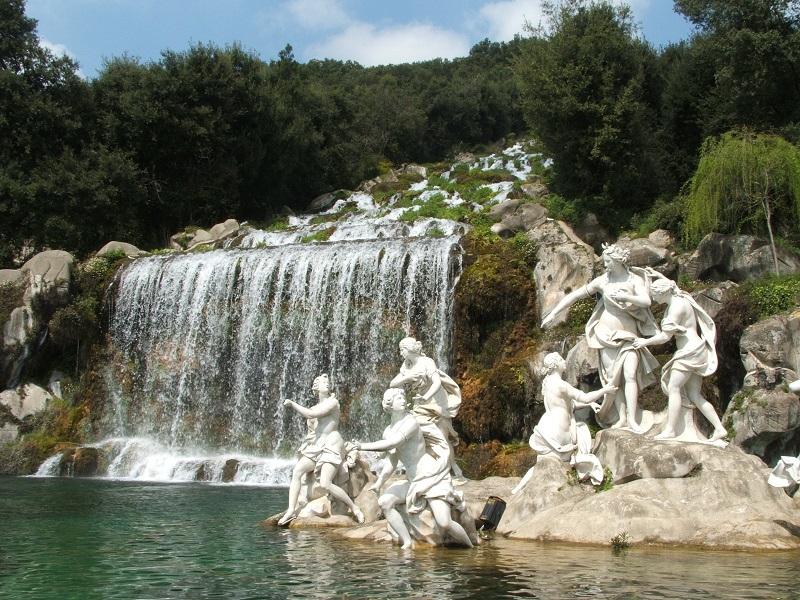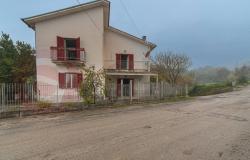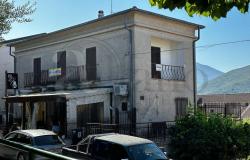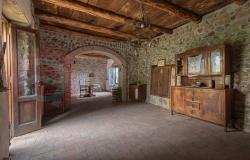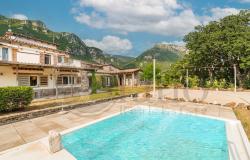By: Luciana Squadrilli
You will have probably heard about Caserta – one of Campania region's 5 provinces - and its stunning Reggia, the Royal Palace that Charles III, King of Naples and Sicily belonging to the Bourbon family. He had built in the XVIII century as his residence instead of Naples. The luxurious Versailles palace was his model, to be outdone, it was designed by the famous Neapolitan architect Luigi Vanvitelli in 1752, and the project was only completed more than 20 years later by his son. The result was magnificent, as it can be still seen today: over 1217 lavishly decorated rooms, 1790 windows, a wonderful, 120 hectares, park featuring both Italian and English gardens, fountains and even a small “hidden lake” commissioned by Maria Carolina of Austria, wife to King Ferdinand IV, Charles's son.
Not very well known is that, during Roman times, the area used to be the hearth of the ancient Campania Felix, a fertile and prosperous land. And that still nowadays, the northern area of the Caserta province, at short distance from the beautiful Reggia and the tormented – but restricted - “Terra dei Fuochi” (land of fires), sadly known for scams and poisoned lands controlled by Camorra, is a wonderful, peaceful and uncontaminated land made of pristine woods, picturesque hamlets and blooming fields where many excellent products grow.
This is the Alto Casertano (Upper Caserta region), a mountain area including 48 municipalities at the northern border of Campania. Surrounded by the peaks of the Matese, Monte Maggiore and Monte Santa Croce mountains (the latter ones belonging to the Trebulanum mountain chains) and crossed by the Volturno river, the Alto Casertano is a charming rural area where people are welcoming and hearty and food is – simply – fantastic.
Hamlets, castles and ancient trails
Of course you can't miss a visit to the area's most iconic place – the Reggia di Caserta and its strikingly beautiful gardens – but there are many other places worth a visit. Not far from the Reggia, there is the ancient San Leucio village with the beautiful Palazzo Belvedere, a former hunting lodge. Included in the UNESCO World Heritage sites list, it was chosen by Charles III (at that time, Charles VII of Naples) as the ideal location for establishing an “up-to-date” silk factory that was also a social experiment, housing the workers' families and creating a self-governed community of silk weavers, which in 1789 was ratified as the Silk Weavers Royal Colony.

The Silk Factory can be visited every day except Tuesday afternoon with a guided tour at fixed times (info belvedere@comune.caserta, +39.0823 301817). Not far from there, the enchanting medieval hamlet of Casertavecchia (Old Caserta) maintains the original Lombard structure and the later Normans and Bourbons buildings, despite not for the (too) many cheap restaurants and tourist shops: the ancient castle with its massive tower and the Norman cathedral dedicated to St. Michael the Archangel are still visible. The tiny village of Piana di Monte Verna, on the slopes of the eponymous mountain, is the site of the beautiful fourteenth-century church of Santa Maria a Marciano: a hidden gem of the Spanish Gothic architecture, it boasts some precious frescoes dating back to the fifteenth-century.

In Caiazzo – a destination we are going to mention later – the shape of the ancient Lombard castle is stil recognizable, while the different mountains (Monte Verna, Monte Santa Croce, Monte Cognolo, Monte Caruso and Monte Pizzola) are where the ruins of ancient Samnites' settlements are to be found. On the Monte Melanico there is the beguiling S. Michael Archangel's grotto, which has been a mystic and devotional place from time immemorial. On the other side of the A1 highway, the volcanic area of Roccamonfina – in a remote place called Tora e Piccilli – the world's oldest fossil trails of human footprints are still visible. Cuma archeological site with its stunning Roman amphitheater also worth a visit.
Food and wine: from mozzarella to Pallagrello
From the ancient Romans to Charles III and his son Ferdinand,everyone was well aware of the area's most precious treasure: its fertile soil. The area was once called Campania Felix and then Terra di Lavoro (Terra Laboris, land of work) and it has been appreciated for a long time especially for the grapes that used to grow here, giving treasured wines such as the ancient Falernum.
Today, the tradition revives thanks to passionate winemakers and researchers who searched for, and bedded out again, forgotten grapes: apart from the Falerno (a red wine made with aglianico and piedirosso native grapes, also found as a white wine made with falanghina grapes). Today it is possible to taste the mysterious Casavecchia – the fierce red wine made with the grapes bearing the same name, coming from the “ruined house” (casa vecchia means old house) where the only surviving vine has been found and salvaged – and the delicious Pallagrello, made with the white and red grapes bearing the same name, in both case elegant and extremely pleasant.
It is not by chance that King Ferdinand decided to put it – as the only local variety - in the “Vigna del Ventaglio” (fan vineyard) that he had planted in San Leucio, collecting all the world's best grapes. In both cases, for the Pallagrello and the Casavecchia's recovery there is one man we have to thank: Giuseppe Mancini, a former lawyer who wanted to taste again the wine his grandfathers drank, and founded the Terre del Principe http://www.terredelprincipe.com/index.php/en/ wine estate with his wife Manuela Piancastelli.
Also one of Italy's most loved products is linked to this area and to the Bourbon family: mozzarella. The first official mentions of the delicious, white and juicy dairy product obtained from buffalo's milk dates back to the thirteenth century, when the monks of the nearby S. Lorenzo in Capua monastery used to offer pilgrims bread and a kind of cheese called mozza (which goes back to the verb mozzare, cut off). And here – in the Carditello Royal Estate – in 1784 Italy's first mozzarella factory was founded by King Ferdinand, with its own buffalos breeding farm. Nowadays, the local Mozzarella di Bufala competes with the slightly different one made in the Sele area, in the province of Salerno, as one of the best in Campania region, that is to say in the whole world.

But there are many other excellent products which are born in this area: the incredible salamis and cured meats obtained from the Nero Casertano black swine bree and the sweet and tasty Alife onions, with their pinkish skin.
Alife onions 
The intense – both in smell and flavor – Conciato Romano cheese, still made today by a few cheesemakers following an ancient tradition. The cheese is cured with the cooking water where the pettole (homemade pasta) are cooked, then with olive oil and herbs and finally put to rest into clay amphoras until it matures. The incredible “curly” tomatoes only growing on the slopes of monte Santa Croce, which have been recovered from dry seeds preserved by old local farmers. The delicious Caiazzane olives, good to be eaten as well as for making an excellent extra virgin olive oil.
Conciato Romano cheese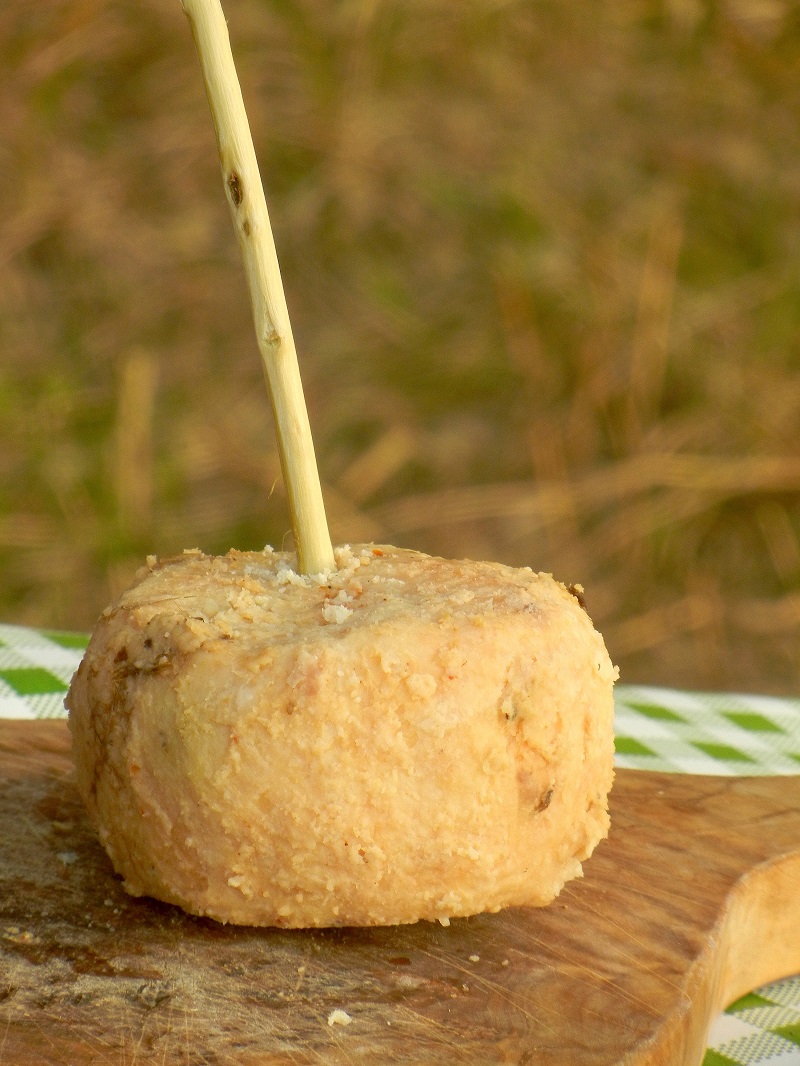
And there is much more to be discovered, and tasted, in Alto Casertano
My 3 favorite places to eat, sleep and buy in Alto Casertano
Pepe In Grani www.pepeingrani.it
Franco Pepe – who inherited his passion for pizza and bread from his father and grandfather, and who has worked for a long time in the family pizzeria on the village's square – has renovated an ancient building in the historical center of Caiazzo and transformed it into his “pizza palace”. Every night, an endless queue fills the narrow stone stairs leading to Pepe in Grani, to get the chance to taste at least one of what has been described as “the best pizzas in the world”. A soft and light hand-kneaded dough and tasty toppings made of the best local delicacies are Pepe's aces in the hole.
Le Campestre http://www.lecampestre.it
If you are looking for silence, peace, nature and a lot of tasty food, Le Campestre is the right place. Set in the secluded Lombardi family's farm on the slopes of Monte Maggiore, it offers simple yet welcoming rooms and an unparalleled atmosphere made of green hills studded by sheep and donkeys, flourishing vineyards and orchards, friendly dogs and hearty people. And then, there is food: Franco takes care of greens and grapes, Liliana and Eulalia prepare scrumptious breakfasts and dinners, while Manuel (Franco and Liliana's son and Eulalia's husband) makes excellent cheeses, including the historical Conciato Romano, to be tasted in many of the house's recipes. Manuel's late younger brother, Fabio, was the first to revive this ancient cheese's tradition.

Il Casolare http://www.caseificioilcasolare.it
Have you ever seen how mozzarella is done? Have you ever tasted a “just-made” one, still warm and slightly chewy? And, have you ever tried a buffalo milk soft ripened cheese (similar to Camembert, to give an idea)? Well, if you haven't – or if you just want to try and buy the best Mozzarella di Bufala, but also smoked provola, fiordilatte (cow's milk mozzarella) and other cheeses – of the area, and one of the best overall, visit La Vecchia brothers' dairy factory. It is located in Alvignano, a small village not far from Caiazzo where you can also find another good pizza at Élite Rossi http://www.pizzeriaeliterossi.com and the local craft brewery Karma http://www.birrakarma.com.
Getting There
The closest airport to Alto Casertano is Naples Capodichino, or in alternative Rome's second airport Ciampino. From both cities there are trains and buses to Caserta, but to travel around the area and enjoy its rural areas, we strongly suggest to rent a car (with a good GPS device).
